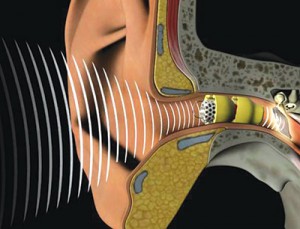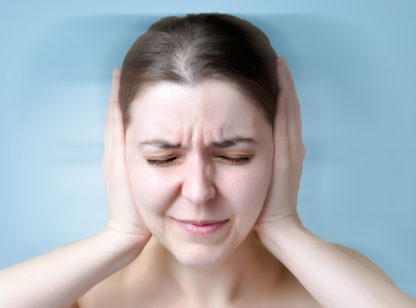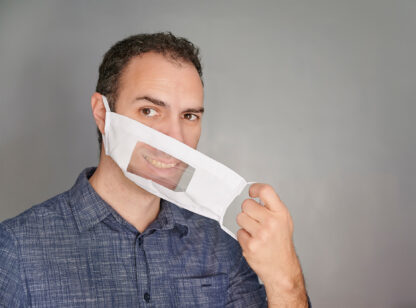
Disposable hearing aids are placed deep in the canal for complete invisibility
There are disposable contact lenses for vision problems, so why not a similar fix for hearing loss? Welcome to a new direction in hearing solutions, with the introduction of the Lyric 2 hearing aid. The Lyric 2 is a cylindrical shaped hearing aid that fits into the canal and can be left in place for months.
Unlike traditional hearing aids which are typically placed behind the ear or in the outer portion of the ear canal, the Lyric 2 is placed deep in the canal, about 4 millimeters from the eardrum. This deep placement makes it invisible to the eye and allows for clearer, more natural sound. It can be left in place for up to 120 days without removal and the wearer can shower and sleep with the device in place.
The Lyric 2 is not for everyone with hearing loss. In some cases, the shape of the ear canal will not accommodate the device, and in other instances, the degree of hearing loss may be too great. The Lyric 2 is best for those individuals with mild to moderately-severe hearing losses.
Although the Lyric 2 is placed deep in the canal for complete invisibility, the wearer is still able to make adjustments to different listening environments and even remove the device if necessary. An easy-to-use keychain device is used to raise or lower volume or turn the device off completely (for example, to block out the snoring of a significant other). After three months, the device is removed by a qualified health care professional and replaced with a fresh new device.
Is the Lyric 2 for You?
If you lead an active, busy life and are seeking an alternative to traditional hearing aids, the Lyric 2 may be for you; however, there are a few things to consider. First, these disposable units are sold on an annual subscription basis and are costly, running between $3,000 and $4,000 annually. Another consideration: the battery inside the device will last for up to 120 days and units must be replaced by a hearing professional, which means regular trips to the office. This may be a worthwhile trade-off for invisibility and day-to-day convenience of not removing or touching the hearing aid. Finally, mild ear infections have been known to occur, although rarely.
Regardless of style, those with hearing loss are strongly encouraged to consider amplification. Untreated hearing loss can have severe consequences: depression, isolation, and accelerated rates of dementia. The FDA recommends seeing a physician first, before purchasing any hearing aids. Medical clearance is necessary to assure there are no other worrisome or otherwise treatable causes of your hearing loss.
Dr. Maya Kato is the founder of The Ear Institute in Palm Desert and can be reached at (760) 565.3900.
Sources: 1) Scherl M, Szabo D, Desai N, Scherl S, Whichard S, Arbogast T. Real-world safety experience with a 24/7 hearing device. Hearing Review. 2011;18(1):18-23; 2) Lin FR, Reffucci L, Metter EJ, An Y, Zonderman AB, Resnick SM. Hearing loss and cognition in the Baltimore Longitudinal Study of Aging. Neuropsychology. 2011 Nov;25(6):763-70.









































Comments (0)